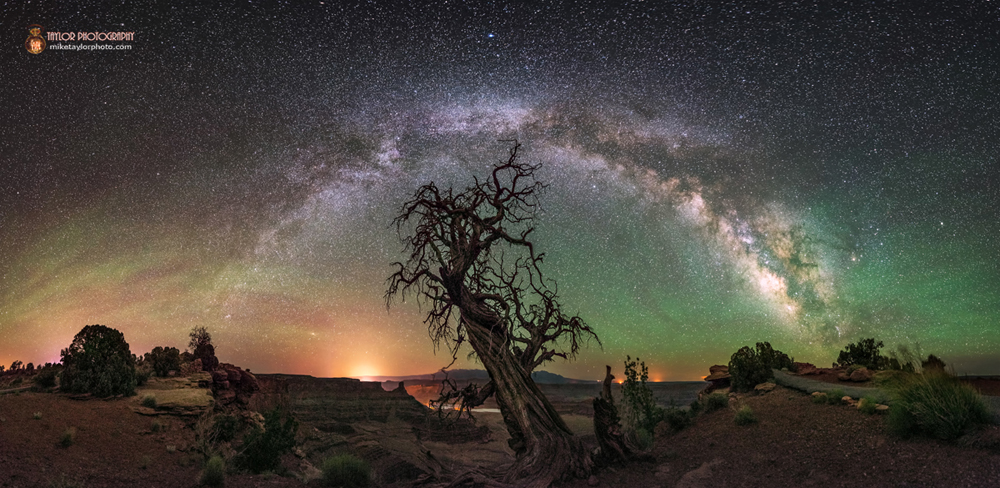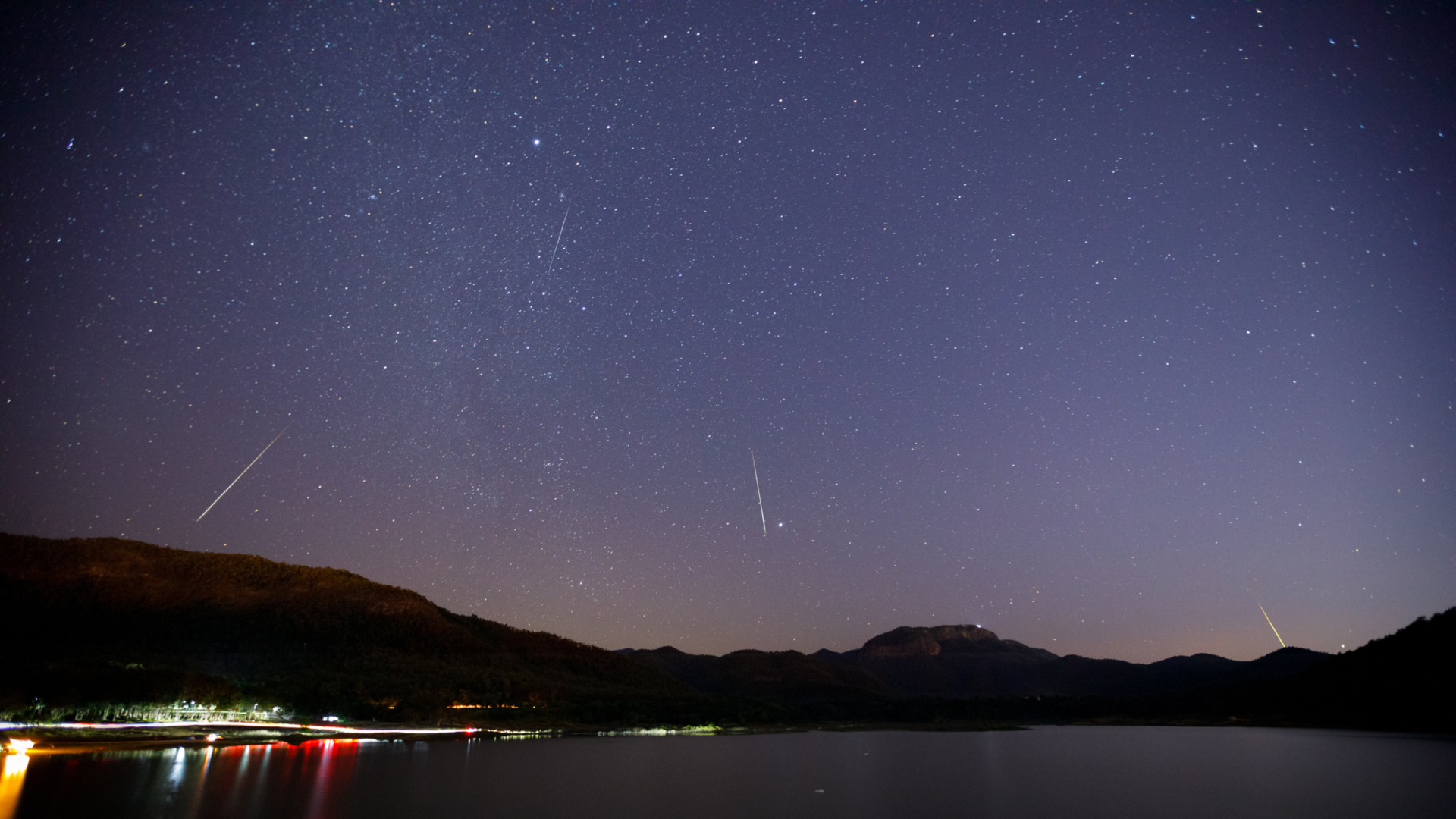To Capture the Milky Way, Capture the Landscape


Mike Taylor is an accomplished landscape astrophotographer and an instructor for night photography and post-processing. Taylor contributed this article to Space.com's Expert Voices: Op-Ed & Insights.
As a night photography instructor, I'm always encouraging students to integrate inspiring landscape elements in their photographs to create stunning night-sky compositions. During a recent trip to Utah, I came across an iconic, gnarly tree clinging to the top of the canyon wall at Dead Horse Point State Park, and I knew I had to incorporate it into some astrophotographs. While one of my cameras shot time-lapse footage of the Milky Way moving across the sky behind the tree, I set up another camera to capture a 16-image panorama that features the full Milky Way arc and covers 240 degrees of view from north (left) to south (right).
"Noctambulism" is another word for sleepwalking, and it seemed a fitting title for this picture.
I wanted to make sure the final image of the scene centered on this amazing tree, so I moved my gear around until I achieved the right composition. I made a few calculations to figure out how many shots it would take to capture the entire arc of the Milky Way galaxy, and then began photographing with my camera in portrait orientation. It took about 12 minutes to capture the 16 frames that make up the image, slowly moving from right to left.
When shooting panoramas like this, it's important to have quite a bit of overlap within each individual frame to make sure you can stitch them together correctly in post-processing. I decided to overlap each photo by 50 percent to ensure proper alignment. I shot each of the 16 frames with a Nikon D600 and 14-24mm aspherical, wide-angle lens at 14mm and the same settings: aperture at f/2.8, shutter speed of 30 seconds, ISO 4000 and the white balance dialed in at 3,570 degrees Kelvin (3,297 Celsius; 5,966 Fahrenheit). [Stunning Photos of Our Milky Way Galaxy (Gallery )]
In the sky on that night, there was an incredible amount of green and a bit of maroon-colored airglow — faint light emitted by molecules in the atmosphere — and it made for dramatic hues in the scene. The man-made path around the edge of the canyon is visible on the right-hand side and just barely on the left. The La Sal mountain range is directly behind the tree, and the bright light to the left of the tree is light pollution coming from the town of Moab, which is about 10 miles away from that spot, as the crow flies. The light-colored "stripe" just to the left of the tree at the bottom of the canyon is one of the evaporation ponds at a potash mining facility just outside of Moab.
I stitched this image via PTGui and processed it through the Lightroom 5 software twice, once for the sky and once for the foreground. In the RAW digital camera files, the foreground was quite dark, because I purposely exposed each frame for the Milky Way and the stars while I was out in the field. I processed the images again to extract as much shadow detail as possible from the tree, bushes, canyon walls and ground. I then manually blended the image of the sky and the image of the foreground in Photoshop CS5, using some selective noise reduction, sharpening and contrast to create the final image seen here.
Breaking space news, the latest updates on rocket launches, skywatching events and more!
Taylor's most recent image post was "Aurora at Moonlight." The views expressed are those of the author and do not necessarily reflect the views of the publisher. Follow Taylor on his social media sites: https://www.facebook.com/miketaylorphoto, http://gplus.to/miketaylorphoto, http://pinterest.com/taylorphoto1, on his websitehttp://miketaylorphoto.com and through his workshops at http://miketaylorphoto.smugmug.com/Workshops. This version of the article was originally published on Space.com.

